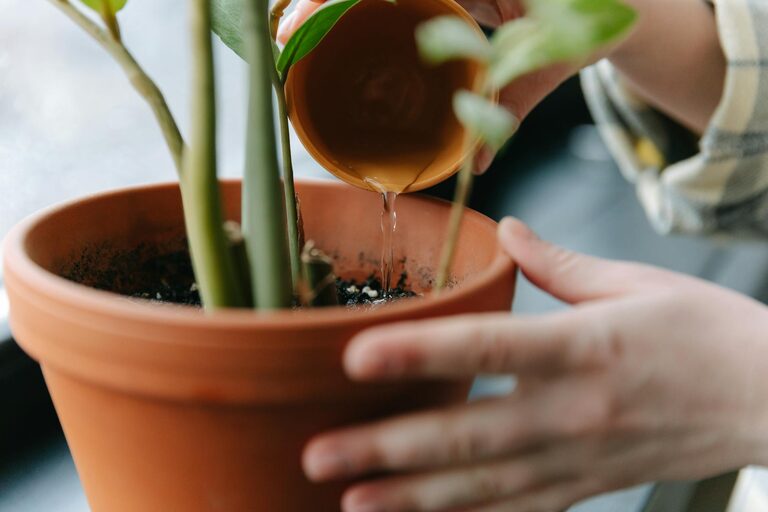Bringing houseplants into your home not only adds a touch of greenery but also boosts your mood and air quality. However, keeping these plants healthy requires some care and attention. Whether you’re a beginner or have a green thumb, this guide offers practical tips to help your houseplants thrive.
Understanding Your Houseplants’ Needs
Different plants have varying needs for light, water, and soil. Knowing what your specific plants require is the first step in maintaining their health.
Light Requirements
Most houseplants need bright, indirect light, but some thrive in low light, while others prefer direct sunlight. Here are some common categories:
– Low light plants: Snake plant, pothos, ZZ plant
– Medium light plants: Peace lily, spider plant, philodendron
– Bright light plants: Succulents, cacti, fiddle leaf fig
Place your plants in spots that match their light needs to prevent problems like leaf burn or poor growth.
Watering Wisely
Overwatering is a leading cause of houseplant problems. Plants vary in their water needs, but these watering tips help everyone:
– Check the soil moisture before watering by sticking your finger an inch into the soil.
– Water only when the top inch of soil feels dry.
– Use pots with drainage holes to prevent waterlogging.
– Adjust watering frequency based on seasons—less in winter, more in summer.
Choosing the Right Soil and Pot
Healthy roots need the right environment:
– Use potting mix formulated for your plant type (e.g., cactus mix for succulents).
– Ensure pots have drainage holes to avoid standing water.
– Repot plants every 1–2 years to refresh soil and provide space for growth.
Caring Tips to Keep Plants Vibrant
Beyond basics, these habits can make a big difference in your plants’ health.
Maintain Proper Humidity
Many houseplants thrive in moderate to high humidity, similar to their natural environments:
– Group plants together to create a microclimate.
– Use a humidity tray filled with water and pebbles beneath plants.
– Mist plants occasionally, especially in dry indoor air.
Regular Feeding with Fertilizer
Plants need nutrients to grow well, especially during active growing seasons:
– Use balanced, water-soluble fertilizer every 4–6 weeks in spring and summer.
– Reduce or stop feeding during fall and winter when plants are dormant.
– Follow package instructions carefully to avoid overfeeding.
Prune to Promote Growth
Pruning helps keep your plants healthy and attractive:
– Remove dead or yellowing leaves promptly.
– Pinch back leggy stems to encourage bushier growth.
– Clean leaves occasionally to remove dust and improve photosynthesis.
Keep an Eye Out for Pests
Houseplants can sometimes attract pests like spider mites, aphids, or scale insects:
– Check leaves regularly for spots, webs, or sticky residue.
– Isolate new plants for a few weeks to prevent spreading issues.
– Treat infestations early with insecticidal soap or natural remedies.
Troubleshooting Common Issues
Despite your best efforts, plants may sometimes show signs of stress. Here’s how to address common problems:
Yellowing Leaves
This can indicate overwatering, poor drainage, or nutrient deficiency. Check soil moisture and adjust watering habits.
Wilting or Drooping
Often a sign of underwatering or root problems. Water thoroughly and check the roots for rot in suspect cases.
Brown Leaf Tips
Usually caused by low humidity, over-fertilizing, or inconsistent watering. Increase humidity and ensure regular watering routines.
Lack of Growth
If your plant isn’t growing, consider if it’s getting enough light or nutrients, or if it needs repotting.
Creating a Routine for Plant Care
Keeping plants healthy is easier with a routine:
– Schedule weekly checks for water needs and overall plant health.
– Rotate plants every few weeks to ensure even light exposure.
– Keep a plant journal noting watering, fertilizing, and any issues.
Conclusion
Healthy houseplants require attention to their specific needs but reward you with vibrant greenery and fresh air. By understanding your plants’ preferences for light, water, and nutrition, creating the right environment, and observing them regularly, you’ll enjoy thriving indoor gardens that brighten your home all year round. Happy planting!

